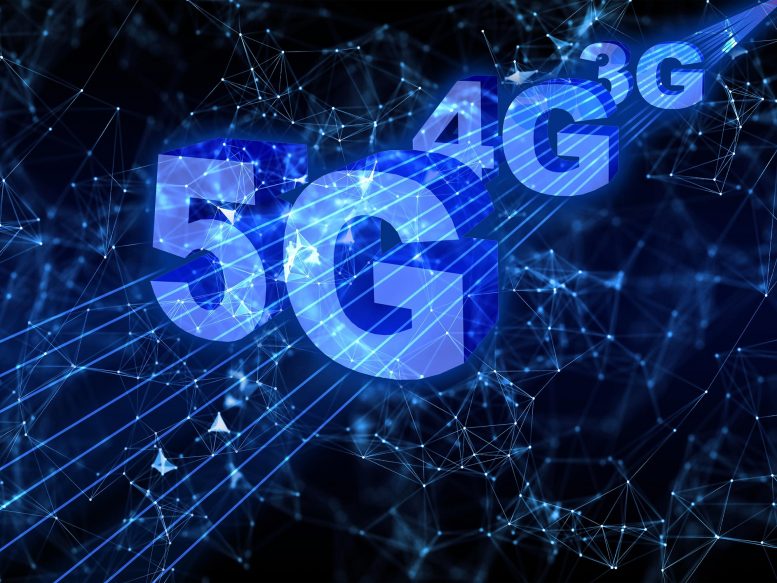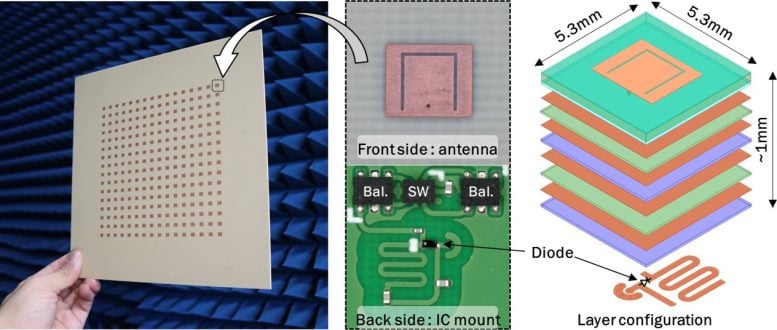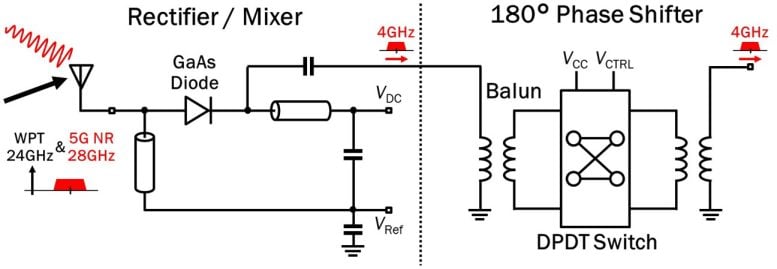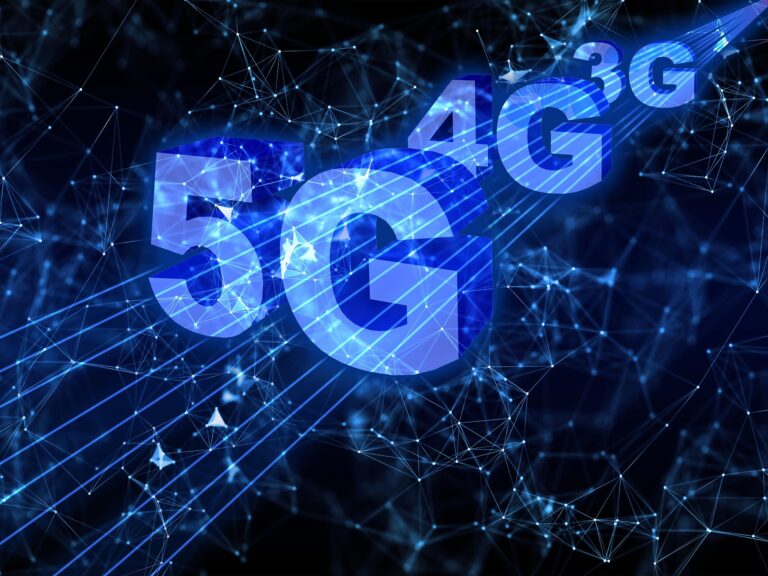
Researchers have developed an innovative wirelessly powered relay transceiver that can enhance the coverage of 5G networks in areas where connectivity is hindered.
Scientists at the Tokyo Institute of Technology have designed an innovative 256-element wirelessly powered transceiver array for non-line-of-sight 5G communications. The novel design features efficient wireless power transmission and high power conversion efficiency, which can enhance 5G network coverage even in link-broken areas. The increased flexibility and coverage area could make high-speed, low-latency communications more accessible.
mmWave 5G communication uses very high frequency radio signals (24-100 GHz) to achieve high speeds, low latency, and large network capacity, and is a promising technology for the next generation of wireless communication. However, current 5G networks face two major challenges. The first is low signal-to-noise ratio (SNR). A high SNR is essential for good communication. The other challenge is link blocking, where obstacles such as buildings interrupt the signal between the transmitter and receiver.

Beamforming and Non-Line-of-Sight Solutions
Beamforming is a key technique for long-distance communication using millimeter waves to improve the SNR. This technique uses an array of sensors to focus the radio signal into a narrow beam in a specific direction, similar to concentrating the beam of a flashlight on a single point. However, this technique is limited to line-of-sight communication, where the transmitter and receiver must be in a straight line. Also, obstacles can degrade the received signal. In addition, concrete and modern glass materials can cause significant propagation losses. Therefore, there is an urgent need for non-line-of-sight (NLoS) relay systems to extend the coverage of 5G networks, especially indoors.
To address these issues, a research team led by Associate Professor Atsushi Shirane of the Future Interdisciplinary Research Institute of Technology (FIRST) at Tokyo Institute of Technology (Tokyo Tech) designed a new wirelessly powered repeater transceiver for 28 GHz millimeter wave 5G communications (see Figure 1). The research is published in Proceedings of the 2024 IEEE MTT-S International Microwave Symposium.

Regarding the motivation for his research, Shirane said, “So far, two types of 5G relays have been considered for NLoS communications: active and wirelessly powered. Active relays can maintain a good SNR even with fewer rectifier arrays, but they consume more power. Wirelessly powered relays do not require a dedicated power supply, but they require many rectifier arrays to maintain SNR due to their low conversion gain, and they use CMOS diodes with power conversion efficiency less than 10%. Our design addresses these issues while using commercially available semiconductor integrated circuits (ICs).”
Technical Specifications and Test Results
The proposed transceiver consists of 256 rectifier arrays with 24 GHz wireless power transfer (WPT). These arrays consist of individual ICs such as gallium arsenide diodes, balanced and unbalanced (bal–un) signal lines, DPDT switches, and baluns to interface between the digital ICs (see Figure 2). In particular, the transceiver is capable of simultaneous data and power transmission, converts the 24 GHz WPT signal to direct current (DC), and can simultaneously transmit and receive in both directions at 28 GHz. The 24 GHz signal is received by each rectifier separately, and the 28 GHz signal is transmitted and received using beamforming. Both signals can be received from the same or different directions, and the 28 GHz signal can be transmitted by retro-reflecting it with the 24 GHz pilot signal or transmitted in any direction.
Test results revealed that the proposed transceiver can achieve 54% power conversion efficiency and -19 decibels conversion gain, higher than conventional transceivers, while maintaining the SNR over long distances. In addition, it achieves a power generation of about 56 milliwatts, which can be further increased by increasing the number of arrays. This also improves the resolution of the transmit and receive beams. “The proposed transceiver contributes to the deployment of mmWave 5G networks even in places where links are blocked, improving installation flexibility and coverage area,” Shirane said of the benefits of the device.
This new walkie-talkie will help make 5G networks more commonplace, making high-speed, low-latency communications available to everyone.
Conference: 2024 IEEE MTT-S International Microwave Symposium
This research was funded by the Ministry of Internal Affairs and Communications, the National Institute of Information and Communications Technology, and the Japan Science and Technology Agency.


